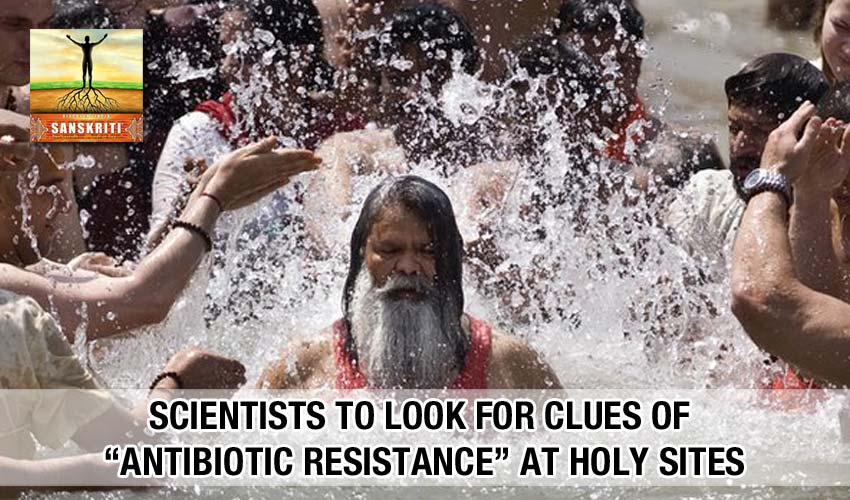[hr]
The Hindu holy sites in the Indian cities of Rishikesh and Haridwar attract millions of pilgrims each year – but they are now the destination for another group of devotees.
Scientists trying to understand the rise of antibiotic resistance, considered by some to be the great health threat of our time, believe they could provide clues to the mechanisms behind its spread.
In an increasingly global society, travel can be pointed to as one of the reasons for the rise of antibiotic resistance.
Now an international team of researchers from Newcastle University and the Indian Institute of Technology, Delhi, is studying how large gatherings of people could become hotspots for the spread of the genes that cause resistance.
In order to do this, they needed to find a site that was free from pollution where they could study the effects of human activity.
Rishikesh and Haridwar – which became famous when the Beatles dropped in during the 1960s – provided the perfect case studies.
All in the gut
Every year, in May and June, these cities welcome hundreds of thousands of pilgrims and the cities’ populations swell from around 300,000 to over a million.
Most of the year, the river running through the cities is pristine. But, during this influx, it is exposed to pollution such as human waste.
“When there’s that many people the local infrastructure gets exceeded – and the chances of being exposed to faecal matter increases,” Prof Graham, from Newcastle University, one of the authors of the study, explained.
This increased level of human waste is key to understanding how genes for antibiotic resistance spread.
That’s due to where the resistance genes are located in bacteria, and how these bacteria are carried by humans.
Waste problem
Antibiotic resistance in bacteria is controlled by naturally occurring genes.
These genes are found on plasmids, small rings of DNA that are separate from chromosomes.
Plasmids can move easily between bacteria, allowing them to acquire traits, such as antibiotic resistance, very quickly.
Many people have some organisms in their gut that contain these genes. Generally, these do not affect a person until they take certain antibiotics.
The river samples that Dr Zia Shaikh, from the Indian Institute of Technology, Delhi, analysed showed that, when the amount human waste entering the river rises during May and June, levels of antibiotic resistance genes are up to 60 times higher.
The indicates that the resistant organisms in people’s guts can be washed into the river in faeces.
The faecal organisms tend not to live very long, but the plasmids that carry antibiotic resistance genes can be quickly transferred to other organisms in the river.
This increases the probability that people will ingest bacteria with antibiotic resistant genes when they drink or bathe in the water.
Once they are exposed, they can then carry them back to their own towns and cities in their gut – carrying antibiotic resistance genes to the wider world.
A global issue
The research suggests that, when the large numbers of people are in close proximity without adequate facilities, the probability that antibiotic resistance genes will spread increases.
This could affect any large gathering around the world.
The spread of the antibiotic resistance genes adds to existing health concerns.
Prof David Heymann from the London School of Hygiene and Tropical Medicine says: “Mass gatherings provide opportunities for infections to spread from human to human, and to humans from other sources through faults in sanitation, water supply, and food from vendors and other sources.”
He said the research was “another important indicator of the importance of the environment in evolution of antimicrobial resistance”.
However, phenomena like the pilgrimage to the River Ganges are an important part of culture.
“Our goal here isn’t to impair the social activity, it to help to make to safer,” said Prof Graham.
Prof Heymann agrees: “Mass gatherings are important and must continue. They can be made safe by ensuring that the risks of infection are minimised.”
Prof Graham hopes that governments, physicians, clinicians, epidemiologists around the world will understand the importance of this kind of research in tackling the spread of antibiotic resistance.
“The role of the environment has been underappreciated,” he said. “Just because you haven’t acquired direct resistance from drinking the water doesn’t mean you haven’t increased the potential for acquiring resistance in the future.”
~ BBC











